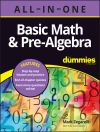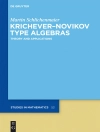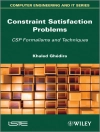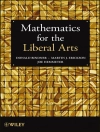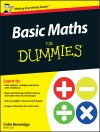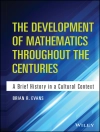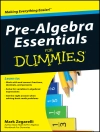Praise for the Second Edition
‘An amazing assemblage of worldwide contributions in mathematics
and, in addition to use as a course book, a valuable resource . . .
essential.’
–CHOICE
This Third Edition of The History of Mathematics
examines the elementary arithmetic, geometry, and algebra of
numerous cultures, tracing their usage from Mesopotamia, Egypt,
Greece, India, China, and Japan all the way to Europe during the
Medieval and Renaissance periods where calculus was developed.
Aimed primarily at undergraduate students studying the history
of mathematics for science, engineering, and secondary education,
the book focuses on three main ideas: the facts of who, what, when,
and where major advances in mathematics took place; the type of
mathematics involved at the time; and the integration of this
information into a coherent picture of the development of
mathematics. In addition, the book features carefully designed
problems that guide readers to a fuller understanding of the
relevant mathematics and its social and historical context.
Chapter-end exercises, numerous photographs, and a listing of
related websites are also included for readers who wish to pursue a
specialized topic in more depth. Additional features of The
History of Mathematics, Third Edition include:
* Material arranged in a chronological and cultural context
* Specific parts of the history of mathematics presented as
individual lessons
* New and revised exercises ranging between technical, factual,
and integrative
* Individual Power Point presentations for each chapter and a bank
of homework and test questions (in addition to the exercises in the
book)
* An emphasis on geography, culture, and mathematics
In addition to being an ideal coursebook for undergraduate
students, the book also serves as a fascinating reference for
mathematically inclined individuals who are interested in learning
about the history of mathematics.
İçerik tablosu
Preface xxi
Changes From the Second Edition xxii
Elementary Texts on the History of Mathematics xxiii
Part 1. What is Mathematics? 1
Chapter 1. Mathematics and its History 3
Chapter 2. Proto-mathematics 15
Part 2. The Middle East, 2000-1500 BCE 27
Chapter 3. Overview of Mesopotamian Mathematics 29
Chapter 4. Computations in Ancient Mesopotamia 39
Chapter 5. Geometry in Mesopotamia 47
Chapter 6. Egyptian Numerals and Arithmetic 57
Chapter 7. Algebra and Geometry in Ancient Egypt 67
Part 3. Greek Mathematics From 500 BCE to 500 CE 79
Chapter 8. An Overview of Ancient Greek Mathematics 81
Chapter 9. Greek Number Theory 93
Chapter 10. Fifth-Century Greek Geometry 105
Chapter 11. Athenian Mathematics I: The Classical Problems 117
Chapter 12. Athenian Mathametics II: Plato and Aristotle 131
Chapter 13. Euclid of Alexandria 143
Chapter 14. Archimedes of Syracuse 151
Chapter 15. Apollonius of Perga 163
Chapter 16. Hellenistic and Roman Geometry 173
Chapter 17. Ptolemy’s Geography and Astronomy 181
Chapter 18. Pappus and the Later Commentators 195
Part 4. India, China, and Japan 500 BCE-1700 CE 205
Chapter 19. Overview of Mathematics in India 207
Chapter 20. From the Vedas to Aryabhata I 217
Chapter 21. Brahmagupta, the Kuttaka, and Bhaskara II 231
Chapter 22. Early Classics of Chinese Mathematics 243
Chapter 23. Later Chinese Algebra and Geometry 259
Chapter 24. Traditional Japanese Mathematics 271
Part 5. Islamic Mathematics, 800-1500 285
Chapter 25. Overview of Islamic Mathematics 287
Chapter 26. Islamic Number Theory and Algebra 297
Chapter 27. Islamic Geometry 307
Part 6. European Mathematics, 500-1900 317
Chapter 28. Medieval and Early Modern Europe 319
Chapter 29. European Mathematics: 1200-1500 331
Chapter 30. Sixteenth-Century Algebra 345
Chapter 31. Renaissance Art and Geometry 355
Chapter 32. The Calculus Before Newton and Leibniz 365
Chapter 33. Newton and Leibniz 379
Chapter 34. Consolidation of the Calculus 393
Part 7. Special Topics 407
Chapter 35. Women Mathematicians 411
Chapter 36. Probability 423
Chapter 37. Algebra from 1600 to 1850 439
Chapter 38. Projective and Algebraic Geometry and Topology 453
Chapter 39. Differential Geometry 469
Chapter 40. Non-Euclidean Geometry 485
Chapter 41. Complex Analysis 499
Chapter 42. Real Numbers, Series, and Integrals 515
Chapter 43. Foundations of Real Analysis 525
Chapter 44. Set Theory 537
Chapter 45. Logic 547
Literature 563
Subject Index 581
Name Index 609
Yazar hakkında
ROGER L. COOKE, Ph D, is Williams Professor of Mathematics at the University of Vermont. His research interests include the history of mathematics and Fourier analysis, and he has taught a general introduction to the history and development of mathematics for many years.


